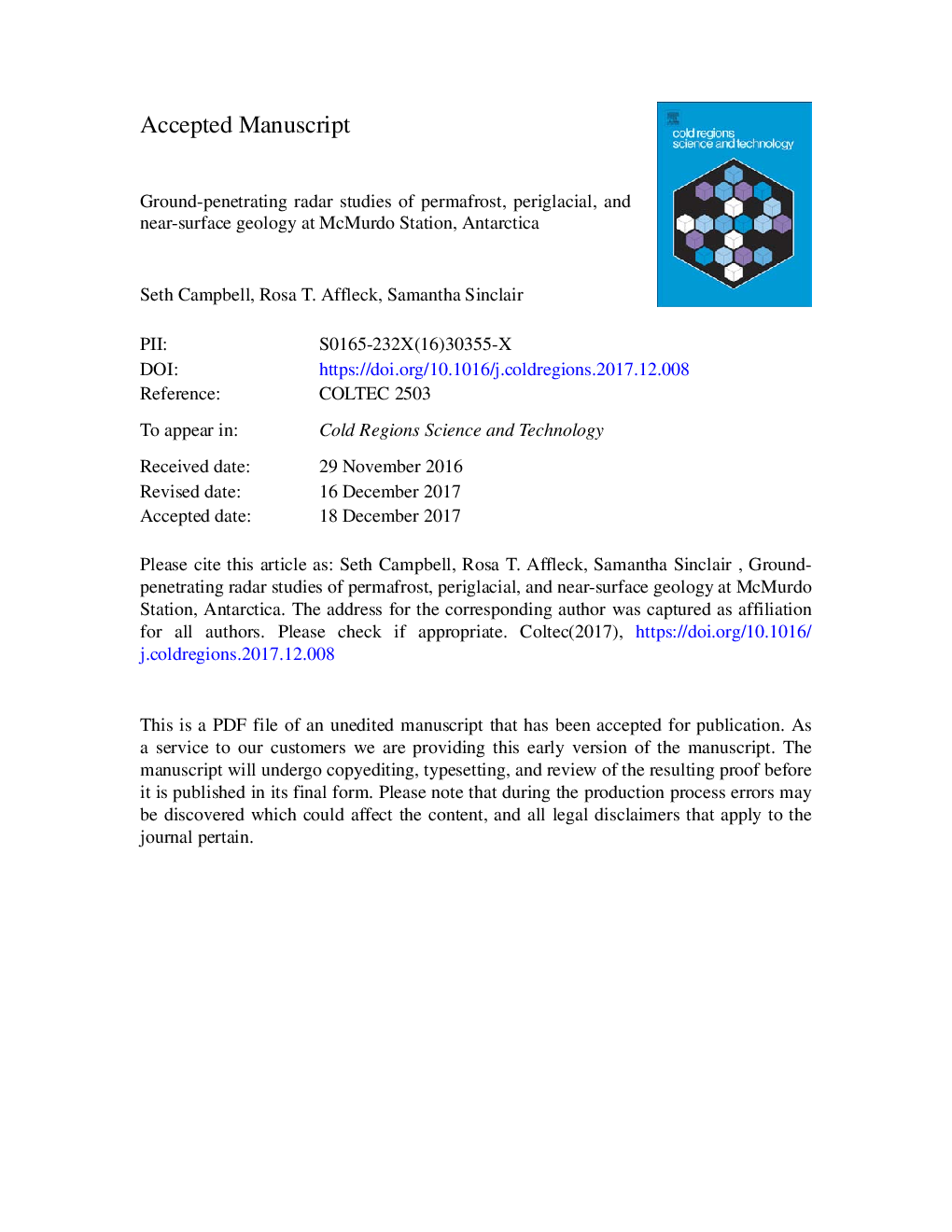| Article ID | Journal | Published Year | Pages | File Type |
|---|---|---|---|---|
| 8906531 | Cold Regions Science and Technology | 2018 | 45 Pages |
Abstract
Installations built on ice, permafrost, or seasonal frozen ground require careful design to avoid melting issues. Therefore, efforts to rebuild McMurdo Station, Antarctica, to improve operational efficiency and consolidate energy resources require knowledge of near-surface geology. Both 200 and 400Â MHz ground-penetrating radar (GPR) data were collected in McMurdo during January, October, and November of 2015 to detect the active layer, permafrost, excess ice, fill thickness, solid bedrock depth, and buried utilities or construction and waste debris. Our goal was to ultimately improve surficial geology knowledge from a geotechnical perspective. Radar penetration ranged between approximately 3 and 10Â m depth for the 400 and 200Â MHz antennas, respectively. Both antennas successfully detect buried utilities and near-surface stratified material to ~Â 0.5-3.0Â m whereas 200Â MHz profiles were more useful for mapping deeper stratified and un-stratified fill over bedrock. Artificially generated excess ice which appears to have been created from runoff, water pooling and refreezing, aspect shading from buildings, and snowpack buried under fill, are prevalent. Results show that McMurdo Station has a complex myriad of ice-rich fill, scoria, fractured volcanic bedrock, permafrost, excess ice, and buried anthropogenically generated debris, each of which must be considered during future construction.
Keywords
Related Topics
Physical Sciences and Engineering
Earth and Planetary Sciences
Earth and Planetary Sciences (General)
Authors
Seth Campbell, Rosa T. Affleck, Samantha Sinclair,
